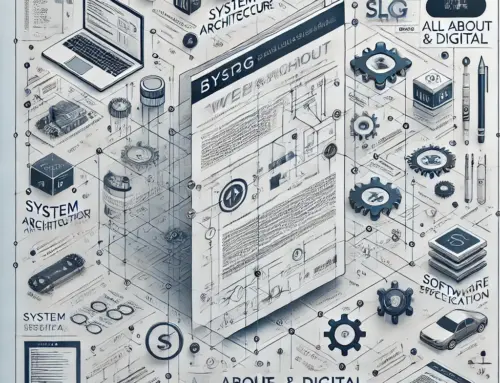BPMN: Business Process Model and Notation
Business Process Model and Notation (BPMN) is a graphical representation standard for specifying business processes in a workflow. It is widely used by business analysts, process designers, and developers to create detailed process maps that help streamline operations and improve efficiency.
What is BPMN?
BPMN is an industry-standard notation that provides a unified approach to process modeling. It is designed to be easily understood by both technical and business users.
Key Features of BPMN:
- Standardized graphical notation.
- Supports complex business processes.
- Bridges the gap between business process design and implementation.
- Compatible with workflow automation systems.
Strategy for Creating a BPMN
To effectively create a BPMN diagram, follow these structured steps:
- Define Objectives: Start by identifying the purpose and goals of the process.
- Identify Start and End Events: Clearly define the entry and exit points of the process.
- Break Down Process Steps: List all tasks, activities, and decisions involved.
- Determine Elements: Choose the appropriate BPMN elements, including events, activities, and gateways.
- Set Process Flow: Use sequence flows to connect different elements logically.
- Define Participants: Assign roles and responsibilities using pools and lanes.
- Include Decision Points: Implement gateways for process branching based on conditions.
- Validate and Optimize: Review and test the process for efficiency and correctness.
BPMN Elements
BPMN defines various elements categorized into four main types:
- Flow Objects: Events, Activities, Gateways.
- Connecting Objects: Sequence Flows, Message Flows, Associations.
- Swimlanes: Pools and Lanes to represent participants.
- Artifacts: Data Objects, Groups, Annotations.
Example 1: Basic BPMN Process
Imagine an order processing system:
Start Event → Receive Order → Process Order → Ship Order → End Event
Example 2: BPMN Diagram with Decision Gateway
Consider a scenario where an order is either approved or rejected:
Start → Receive Order → (Check Order Validity?) → [Valid: Approve Order] → Process Order → End
→ [Invalid: Reject Order] → Notify Customer → End
Advantages of BPMN
- Improves process clarity and documentation.
- Facilitates communication between stakeholders.
- Enables automation and process optimization.
- Reduces errors and inefficiencies.
Real-World Use Cases
BPMN is widely used in industries such as banking, healthcare, logistics, and government services to optimize workflows and reduce operational bottlenecks.
Example: Loan Approval Process
Many banks use BPMN for loan approval workflows:
Start → Receive Application → Evaluate Credit Score → (Approved?)
→ [Yes] Approve Loan → Disburse Funds → End
→ [No] Reject Loan → Notify Applicant → End
Conclusion
BPMN is a powerful tool for modeling business processes, improving workflow efficiency, and enabling process automation. Its standardized approach makes it a valuable asset for organizations aiming to streamline operations and enhance productivity.

